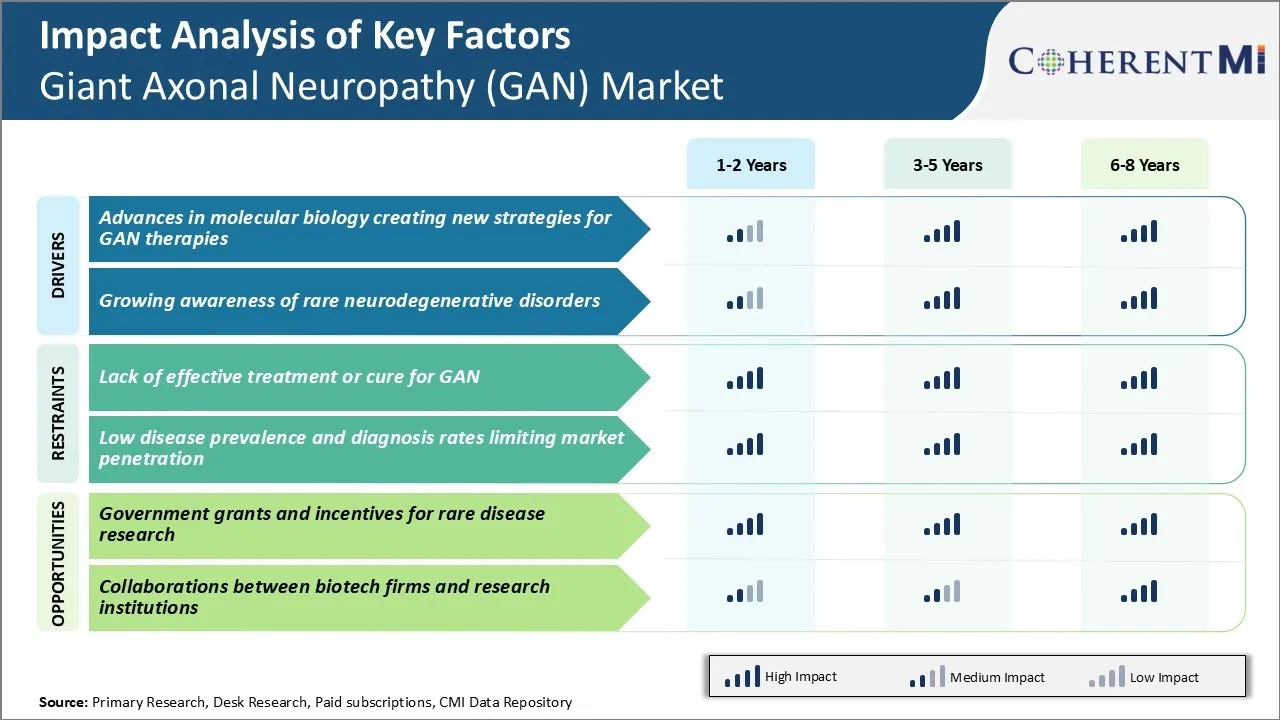Giant Axonal Neuropathy (GAN) Market Trends
Market Driver - Advances in Molecular Biology Creating New Strategies for GAN Therapies
One of the key discoveries was identifying the role of mutations in the giant axonal neuropathy gene (GAN) which codes for a cytoskeletal protein called gigaxonin. Loss of functional gigaxonin due to these mutations is known to cause axonal swelling and degeneration in long motor and sensory neurons. Several research groups are investigating gene therapy as a potential cure.
Other therapeutic avenues in the giant axonal neuropathy (GAN) market being tested include proteasome activators that can clear aggregate protein deposits and reduce neurotoxicity. Experimental drugs boosting protein degradation pathways showed promise in cell and animal studies. Researchers are also exploring whether microtubule stabilizers or supplements enhancing mitochondrial function can help reduce neuronal stress and damage.
All these targeted biological approaches aim to correct the root cause deficiencies or slow pathogenesis at the molecular level. Their success can open new possibilities for precision treatment of other rare genetic diseases as well. It is certainly an exciting time for the scientific community engaged in developing novel therapies for challenging conditions like giant axonal neuropathy.
Market Driver - Growing Awareness of Rare Neurodegenerative Disorders
Rare diseases often go unnoticed due to the small number of patients affected and lack of recognition within the medical community. However, rare disorder advocacy groups have been actively working to enhance understanding about conditions like giant axonal neuropathy amongst healthcare practitioners, policymakers as well as the general public.
The open discussion on challenges faced by GAN patients has touched many hearts as well. There is a growing sense of solidarity in society towards citizens living with rare medical conditions previously confined to medical literature. Some national health programs have also responded by expanding coverage for certain orphan drugs, therapies, and travel reimbursement for specialized care.
All these positive changes stem from joined advocacy transforming public understanding and policy landscapes. Looking ahead, further strides in global rare disease recognition can help current and future GAN patients access comprehensive care and research more seamlessly. This will prove to be an important driver for the giant axonal neuropathy (GAN) market.

Market Challenge - Lack of Effective Treatment or Cure for GAN
One of the major challenges for the giant axonal neuropathy (GAN) market is the lack of effective treatment or cure for GAN. Developing an effective treatment that can halt or reverse the nerve degeneration has been a long-standing challenge for researchers.
Numerous therapeutic molecules targeting the underlying genetic defect are being evaluated but a viable treatment is yet to be established. The size of the potential patient population also remains small due to the rarity of the condition, making it less attractive for large pharmaceutical companies to invest substantially in research.
Unless a safe and effective treatment becomes available, the giant axonal neuropathy (GAN) market is expected see limited growth over the coming years.
Market Opportunity - Government Grants and Incentives for Rare Disease Research
Due to the orphan drug designation provided to conditions affecting less than 200,000 people in the US, several governmental agencies offer funding support to boost research. For instance, the Rare Disease Clinical Research Network by the National Institutes of Health supports consortia of investigators to study multiple conditions simultaneously.
Similarly, the Office of Orphan Product Development at the FDA facilitates development of drugs for rare diseases through various regulatory guidances. Such funding initiatives have incentivized both academics and biotechs to investigate new therapies. With sustained government support, more treatment candidates are expected to progress through clinical trials in the future, opening avenues for commercialization and market growth.
This will ultimately benefit the patient community by potentially providing the first targeted therapies for GAN. Ultimately, new avenues of opportunities in the giant axonal neuropathy (GAN) market.